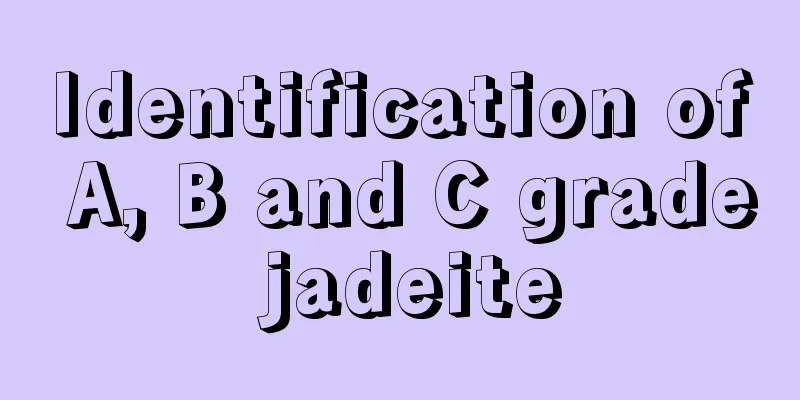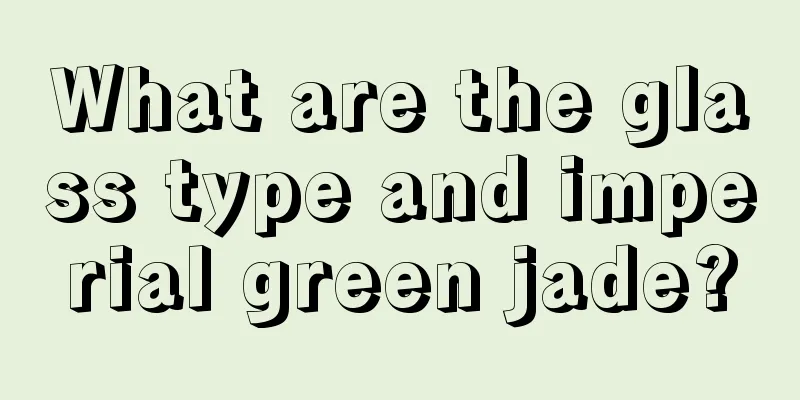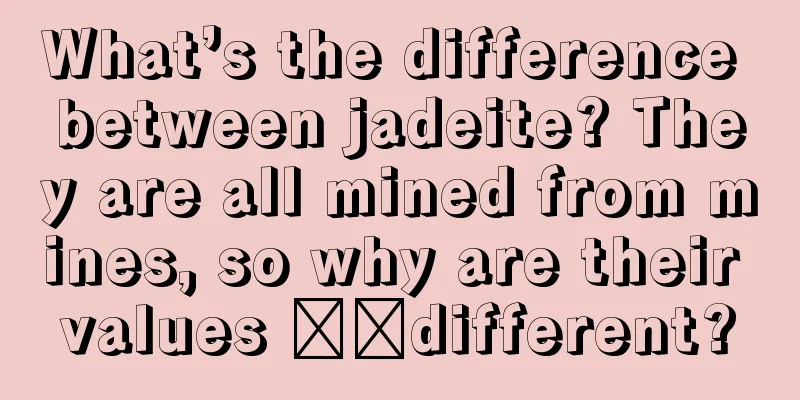Identification of A, B and C grade jadeite

|
People in the jade industry often use ABC goods to refer to the quality of jade goods. Grade A: natural jadeite with real color; Grade B: artificially treated bleached and glue-injected jadeite, called "bleached glue jade". Goods C: Artificially dyed jade. Common dyeing colors are green, purple, red, yellow, etc. B+C goods: that is, they have been treated with bleaching and glue and then artificially dyed. Since B-grade jewelry is very deceptive, it is very common in the jewelry market, and it is still difficult to accurately identify it. Here, we summarize the experience and opinions of various companies and briefly introduce the naked eye identification characteristics of B-grade and C-grade jewelry as follows: color: B-grade jade has bright colors, strong contrast between color and ground, translucent texture and no impurities. Visually, the range and volume of green have expanded, that is, there is more green. Because the iron (secondary color) of processed jadeite is drifted away, when green and white exist at the same time, the color difference and distribution of the two are too different. If observed with a magnifying glass, the green part of B-grade jadeite is composed of randomly distributed short green silk threads. The silk threads are green, but the spaces between the silk threads are colorless. In many cases, one or both ends of some silk threads (mainly some silk threads on the periphery) can be seen dark yellow. This type of B-goods sometimes has another characteristic, that is, under a magnifying glass, no definite green color can be found, but the surface is instead randomly covered with short dark brown threads (commonly known as black threads). Another type of false emerald green color of C goods. Under a magnifying glass, the green color is not thin short threads, but crisscrossed like water plants, and the gaps between them are also colorless. Among C goods, a green color that is more difficult to identify is that which appears linear or strip-shaped under a magnifying glass, with green edges that are blurred like the squeezed fibers at the edge of a cotton ball. If the B-grade jade is light green, you cannot find the exact emerald green color under a magnifying glass, but the emerald green part will show broken characteristics. The color of dyed jadeite is generally dark in the cracks and cracks between crystals, while the crystal itself cannot be dyed. If it is dyed and then faded, the color in the cracks will lighten, but dark green stripes will still remain on the crack walls. Luster: The luster of jade is related to its degree of polishing, and the degree of polishing is related to the texture of jade. Natural jade generally has a glassy luster, while jade that has been chemically treated has a poorer luster. The ones that have been added with glue often have a waxy luster. structure: After acid treatment, many dissolution grooves of different shapes will naturally appear on the surface of the finished jade product, sometimes in rows. These dissolution grooves are called "sand eyes" by experts. Even if glue is added, they cannot be completely filled, or they are easy to fall off and appear. This can be used as one of the signs of artificial treatment of jade. The original structure of jade is a mosaic, oriented, continuous structure, but jade after chemical treatment destroys this structure and shows various changes. Some of them are loose in structure (destruction of mosaic structure), staggered and broken long columnar crystals, destruction of directional arrangement of crystals, directional arrangement of crystals becoming a disordered structure, and blurring of crystal grain boundaries. fcgc66 fcpf18 |
>>: What are the characteristics of A-grade jadeite? How to identify A-grade jadeite?
Recommend
Let’s analyze the value of jadeite together! Is investing in jadeite feasible?
The ancients believed that jade was a stone from ...
Less is more, and the full use of jade carving makes the works full of spirituality and heart-moving.
Jade carving has a history of thousands of years ...
There is a reason why I like jadeite carved into Buddha shapes!
Looking at the jade market, it is not difficult t...
Share the Nanqi jadeite raw stone, how is the effect of making the finished dragon turtle?
This small piece of material came from the Southe...
Invite experts to deeply analyze the identification method of ABC jadeite with naked eyes
1. Look at the jadeite properties: When jadeite i...
Who says wearing jade is not fashionable? Being slapped in the face by celebrities every minute!
As we all know, jade is the crystallization of th...
Jade is made up of “30% material and 70% craftsmanship”. So what kind of carving is considered good?
There is a saying in the jade industry that "...
Should you look at the quality or color of jade? Have you made the right choice?
Most people familiar with the jade industry have ...
Jade cannot be made into a useful object without being carved. How does jadeite become a work of art from a piece of stone?
Man takes care of jade for three years, and jade ...
When buying raw jadeite, you need to pay attention to these four points
The full opening of the live broadcast market has...
Interesting talk about modern jade carving technology: jade round beads and jade round balls production technology
Jade carving is a traditional craft. It has a tra...
The Damo pendant is carved with the yellow and green double-color jadeite of Damakan with coarse crystals. The finished product is very pleasing to the eye.
Jade lovers who like to gamble on jadeite stones ...
Jade knowledge: Seven criteria for evaluating good jade
Xiangyu Jade appreciation is an art. Jade apprais...
A jade melon is carved with three or two lines, just like a simple child.
The jadeite fortune melon is one of the simpler s...
The charm of jade and jadeite, from purchasing to wearing, will make you fall in love with it at first sight
First of all, we need to clarify one question: wh...









